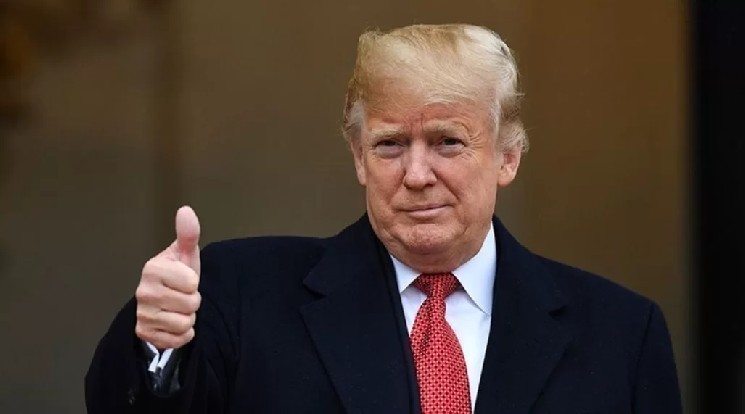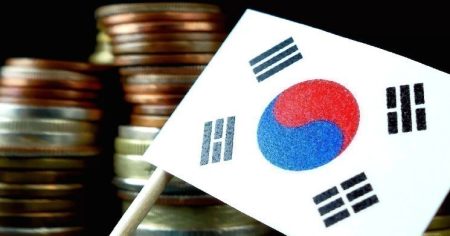Trump Unveils Bold Economic Plan: $2,000 Payments for Most Americans Funded by Tariff Revenue
President Proposes Unprecedented Distribution of Customs Duty Revenues While Touting Economic Successes
In a significant policy announcement that could reshape American economic discourse heading into the election season, President Donald Trump has revealed plans for a sweeping payment program that would distribute at least $2,000 to most American citizens. The initiative, unveiled through a statement on his Truth Social platform, would be financed through what Trump describes as “trillions of dollars” in collected tariff revenues—signaling a potentially dramatic shift in how trade policy intersects with direct citizen benefits.
The proposed program would exclude high-income Americans while directing financial relief to the majority of the population. “We’ve collected trillions of dollars in tariffs, and it’s time to give citizens the rewards they deserve,” Trump stated in his announcement, framing the payments as both economic stimulus and a form of profit-sharing from his administration’s trade policies. The former president, who has consistently championed tariffs as a cornerstone of his economic approach, appears to be doubling down on the strategy while introducing a novel mechanism for redistributing the resulting revenue directly to Americans.
Trump’s announcement comes amid his broader claims of economic triumph, with assertions that “the United States has now become the richest and most respected country in the world.” The former president painted an exceptionally rosy picture of current economic conditions, declaring that “inflation is near zero, stock market indices are breaking records, and 401(k) retirement accounts have reached their highest value in history.” These statements, which don’t fully align with official economic indicators, were accompanied by claims that investment and factory construction across the country have reached what he termed a “historic peak.” Financial analysts note that while some economic metrics have indeed shown improvement, the complete picture is considerably more nuanced than Trump’s characterization suggests.
The Potential Economic Impact of Direct Payments
The economic implications of such a massive direct payment program could be substantial, particularly when viewed through the lens of previous stimulus efforts. Market data from late 2020 shows that similar economic stimulus announcements during the COVID-19 pandemic corresponded with significant market movements, particularly in alternative investment sectors. For instance, Bitcoin prices showed marked volatility following the pandemic-era stimulus announcements, suggesting that large-scale government payments can influence not only consumer spending but also investment patterns and asset valuations across various markets.
Economists remain divided on the potential inflationary impact of such a program. While direct payments would immediately increase consumer purchasing power—potentially stimulating economic activity—they could also drive prices higher if implemented when the economy is already operating near capacity. “Direct payment programs of this magnitude require careful timing and implementation,” explains Dr. Jennifer Rothman, an economic policy researcher at the Brookings Institution. “The impact on inflation, consumer spending, and broader economic indicators depends heavily on the existing economic conditions when payments are distributed.” The proposal has already sparked debate among economic advisors, with supporters viewing it as an innovative approach to wealth redistribution and critics warning about potential inflationary consequences.
Beyond the direct economic effects, Trump’s proposal represents a significant departure from traditional Republican fiscal policy. By linking tariff revenues—typically viewed as government income—to direct citizen payments, the proposal creates a novel revenue distribution model that blurs conventional lines between trade policy, taxation, and social benefits. This approach potentially reframes tariffs not merely as protective trade measures but as mechanisms for generating domestic economic benefits. In the same series of statements, Trump also addressed Republican lawmakers regarding government shutdowns, advocating for shorter processes to reopen government operations swiftly rather than engaging in protracted budgetary standoffs. “Republicans should shorten the process, reopen the government, and win the upcoming midterm elections by passing big things,” he stated, suggesting a strategic pivot away from the shutdown tactics that have characterized previous budget negotiations.
The announcement comes at a pivotal moment in American economic policy discussions, with inflation concerns gradually easing but still present in consumer sentiment. By positioning tariff revenues as a source of direct citizen benefits rather than general government funding, Trump appears to be crafting an economic narrative that attempts to reconcile his protectionist trade policies with populist economic relief measures. Whether this approach will resonate with voters—and whether it could be implemented as described—remains to be seen, but it undeniably introduces a provocative new element into ongoing debates about trade, taxation, and the proper role of government in economic redistribution.
Note: This article provides analysis of policy proposals and economic statements and should not be construed as investment advice. Economic policy announcements may impact markets in unpredictable ways, and investors should consult with qualified financial advisors before making investment decisions based on political developments.













